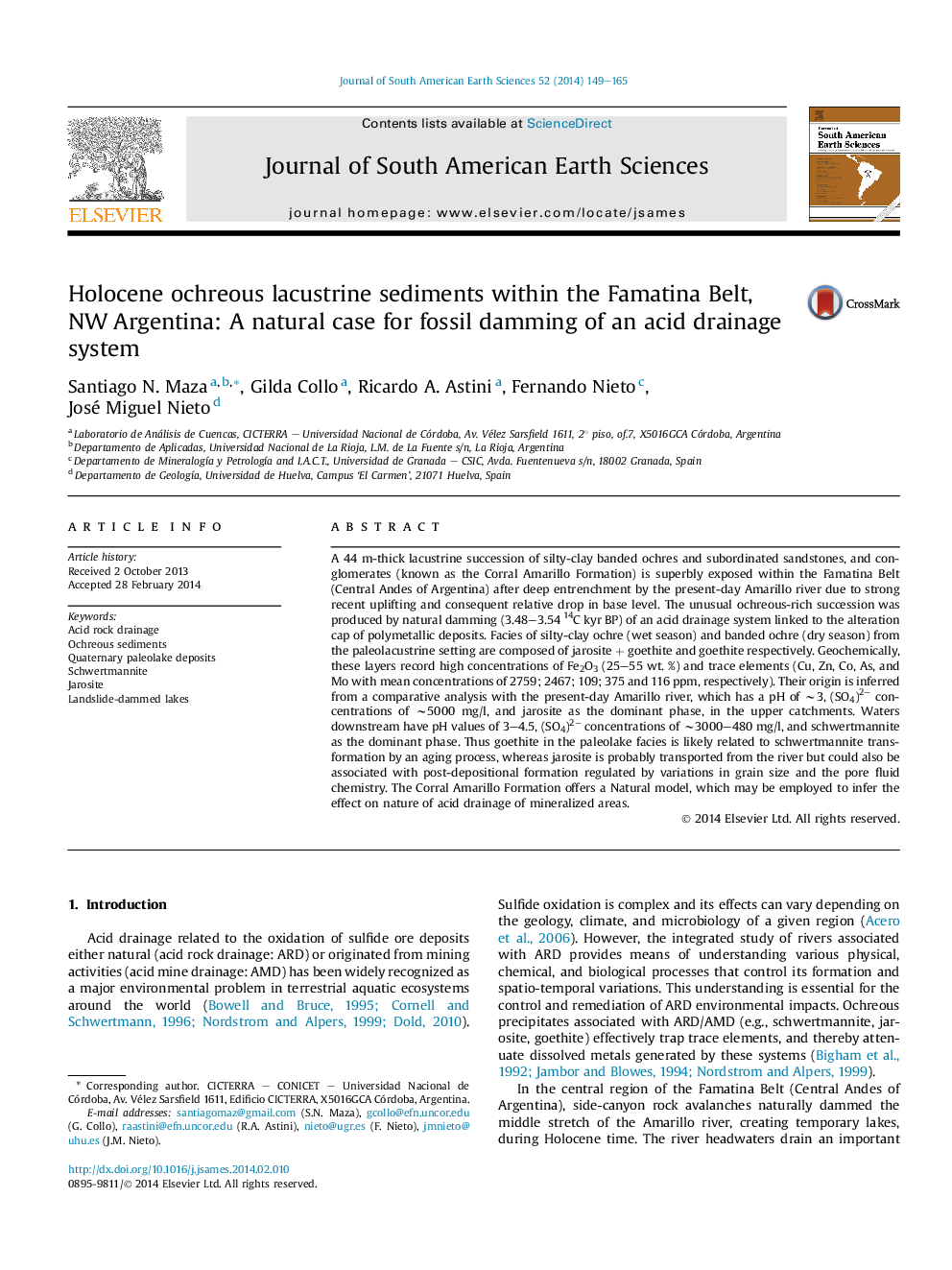| کد مقاله | کد نشریه | سال انتشار | مقاله انگلیسی | نسخه تمام متن |
|---|---|---|---|---|
| 6431338 | 1635157 | 2014 | 17 صفحه PDF | دانلود رایگان |

- Holocene ochreous lacustrine deposits from Southern Andes were studied.
- The ochreous-rich succession was produced by natural damming around 3.51 kyr BP.
- Mineralogy of distal facies is characterized by alternating goethite-jarosite.
- Their origin was inferred from comparative analysis with the current Amarillo River.
- Paleo-seasonal discharge/chemical fluctuations implications were discussed.
A 44 m-thick lacustrine succession of silty-clay banded ochres and subordinated sandstones, and conglomerates (known as the Corral Amarillo Formation) is superbly exposed within the Famatina Belt (Central Andes of Argentina) after deep entrenchment by the present-day Amarillo river due to strong recent uplifting and consequent relative drop in base level. The unusual ochreous-rich succession was produced by natural damming (3.48-3.54 14C kyr BP) of an acid drainage system linked to the alteration cap of polymetallic deposits. Facies of silty-clay ochre (wet season) and banded ochre (dry season) from the paleolacustrine setting are composed of jarosite + goethite and goethite respectively. Geochemically, these layers record high concentrations of Fe2O3 (25-55 wt. %) and trace elements (Cu, Zn, Co, As, and Mo with mean concentrations of 2759; 2467; 109; 375 and 116 ppm, respectively). Their origin is inferred from a comparative analysis with the present-day Amarillo river, which has a pH of â¼3, (SO4)2â concentrations of â¼5000 mg/l, and jarosite as the dominant phase, in the upper catchments. Waters downstream have pH values of 3-4.5, (SO4)2â concentrations of â¼3000-480 mg/l, and schwertmannite as the dominant phase. Thus goethite in the paleolake facies is likely related to schwertmannite transformation by an aging process, whereas jarosite is probably transported from the river but could also be associated with post-depositional formation regulated by variations in grain size and the pore fluid chemistry. The Corral Amarillo Formation offers a Natural model, which may be employed to infer the effect on nature of acid drainage of mineralized areas.
Journal: Journal of South American Earth Sciences - Volume 52, July 2014, Pages 149-165